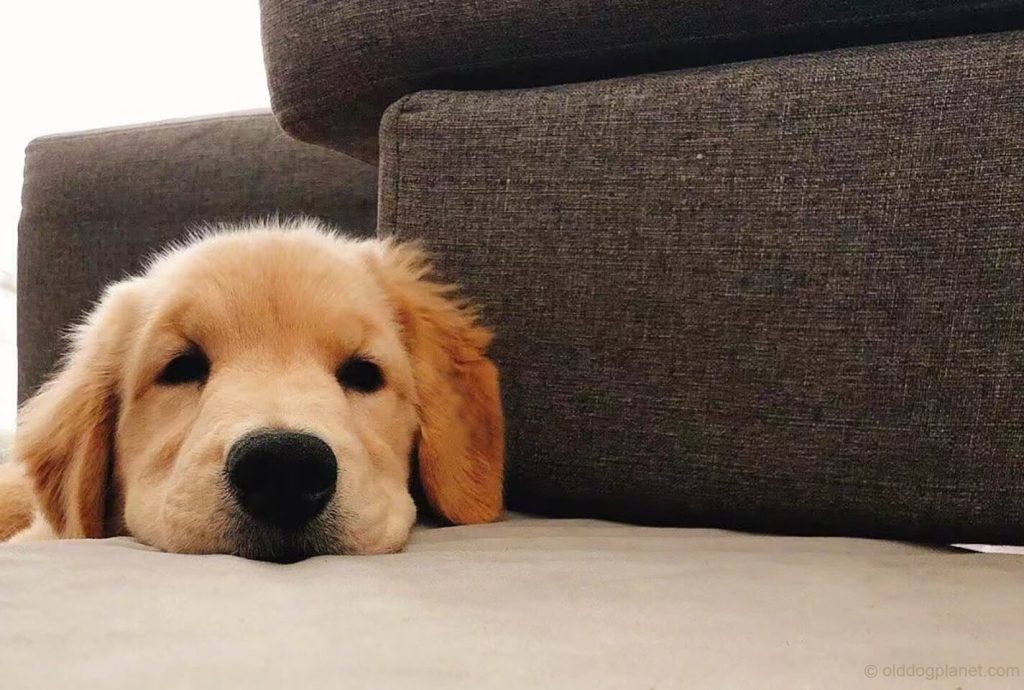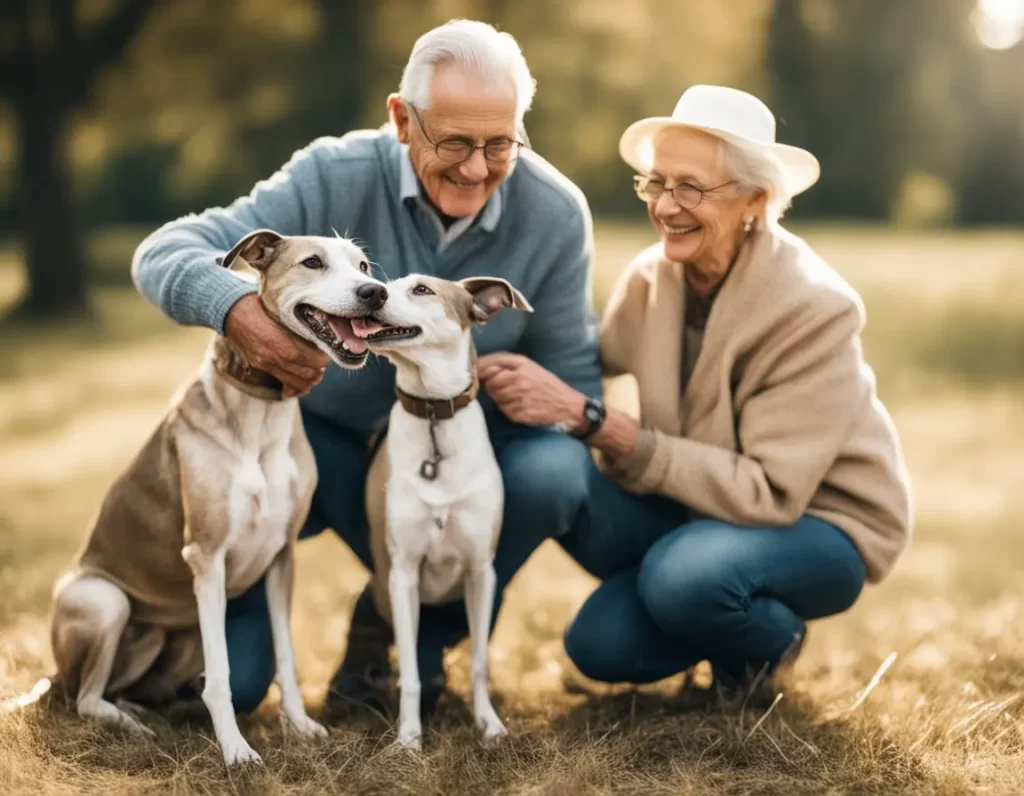Do older dogs get used to puppies? In general, most older dogs can accept a puppy as a new family member, but this does not happen overnight. It usually takes about 3 months for both of them adapt to each other and get along well since their first meet.
How to help your older dogs to get used to puppies?
Before meeting for the first time
- Choose the right puppy
- Choose a gentle puppy
- Some puppies are naturally aggressive, which makes them a serious threat to older dogs.
- I do not recommend choosing naturally aggressive puppies to join families with older dogs. This could turn out to be a disaster.
- Consult with the kennel professionals and ask them to assist you in selecting a softer guy to bring some fun and warmth to your old dog instead of constant provocation and fighting.
- Choose a puppy of the opposite gender
- It is easier for two dogs of different genders to get along well, and there will be no disputes over the status or territory of the head dog.
- In general, male dogs tend to be more tolerant of female dogs, and female dogs are rarely aggressive towards male dogs.
- Choose a breed that will grow up to be the same size as your older dog
- For senior dogs, especially senior small breed, when their new partner grows into a giant in just 4-5 months, aged small breeds are often unable to resist the harassment of this young and energetic beast, which will make the small ones to feel a great sense of helplessness and mental pressure.
- Another issue that is easy to overlook is that two dogs with large body size differences frequently have significant differences in their daily needs and behavior, which means that dog owners must deal with two very different needs. This can be exhausting for people who don’t have enough time or energy.
- Choose a gentle puppy
- Get a complete set of supplies for your puppy
- Allowing the puppy to use the old dog’s supplies is not fair to the old dog, who is accustomed to using these items alone.
- The goal of purchasing a complete set of supplies for your puppy is to provide a separate living space for your old dog. Here is the list of supplies for the puppy:
- Water bowl & food bowl
- Crate
- Kennel
- Leash & collar
- Toys
- Puppy specific food & treats
- Dye the puppy with the old dog’s scent
- Before allowing the two dogs to meet, smear the senior dog’s scent on a puppy’s collar. For example, you can leave the collar with the senior dog’s toys or kennel for a few days before putting it on the puppy, or you can rub or wrap the puppy in an old dog-scented blanket to enhance the old dog’s smell.
- If you intend to bring the puppy back in a pet carrier, you can leave the carrier next to the old dog’s kennel for a few days ahead of time to familiarize the old dog with the carrier. Place a few pieces of cloth with the old dog’s scent in the carrier before putting the puppy in.
- Meet at where the puppy was born, but not the old dog’s territory
- Do not introduce new puppies to your old dog at home because the home is the old dog’s inherent territory, and the dog’s territorial awareness will make it feel violated or threatened by a new puppy in its territory.
- Do not meet in the wild, parks and other public places, because puppies are easily infected with diseases such as Canine Parvovirosis or Canine Distemper in public places before they are vaccinated.
- The dog breeding kennel or location where the puppy is being raised is the ideal place for the two dogs to meet each other. This is a new environment for the old dog, and there isn’t an inch of territory here that belongs to it. And for puppies, this is a safe haven free of the risk of infection.
After meeting for the first time
- Give priority to the needs and habits of the old dog
- Always prioritize the old dog over the new puppy in your mind. You should always prioritize meeting the needs of the old dog and allowing the puppy to conform to the old dog’s habits.
- Always feed the old dog first, whether it’s dog food or snacks.
- Let the old dog to pick what it wants before giving the toys to the new puppy.
- When an old dog wants to sleep (Please refer to this blog post to learn more about senior dogs’ sleeping), play, or return home, the puppy should go at the same pace as the old dog, without making the old dog wait or indulging the puppy.
- Set up a “firewall” for your old dog’s inherent territory
- Ideally, place a high enough obstacle at the door to allow the old dog to enter the room while the puppy cannot. This creates an area where the old dog will not be disturbed by the puppy at any time, and when the old dog has had enough, it can retreat to this room with a “firewall” to rest.
- Make rules for puppies
- A puppy is similar to a blank canvas. It didn’t have many unbreakable rules in its mind when it left its mother and came to your house. During the period when the dog has only recently been adopted, it can accept any rules you set for it. It is recommended that you make the following rules for your puppy in order to protect the rights of the old dog:
- In terms of behavior, puppies are not permitted to challenge the authority of older dogs.
- Puppies are not permitted to take old dogs’ toys at their leisure.
- Puppies are not permitted to use the old dog’s bowls and kennels.
- The owner should intervene quickly to stop the puppy’s behavior and allow it to quickly form a code.
- A puppy is similar to a blank canvas. It didn’t have many unbreakable rules in its mind when it left its mother and came to your house. During the period when the dog has only recently been adopted, it can accept any rules you set for it. It is recommended that you make the following rules for your puppy in order to protect the rights of the old dog:
- Allow the old dog to growl at the puppy
- When the puppies cross the line, the old dog’s howling and grinning should be allowed, as this is the most effective way for them to balance their interaction and boundaries.
- At the same time, you should be aware of the old dog’s aggressive behavior. When you discover that the old dog intends to attack, use a piece of cardboard or other large enough object to separate the old dog from the puppy so that the puppy can disappear from the old dog’s sight.
- Please don’t take sides when separate them, and you don’t need to say anything to both of them.
- Completely separate the old dog from the puppy when unaccompanied
- When there is no one at home, it is very dangerous to have the puppy and the old dog in the same room without any protection.
- The puppy can be temporarily kept in a crate, which should be large and strong enough to ensure that the puppy has an adequate and stable space for movement.
- Take a walk with the old dog and the puppy
- You can use a double dog leash to connect two dogs to each other, and they will cooperate and adapt to each other’s pace.
- Dogs enjoy going for walks with their owners because it is their most relaxing time of the day. When two dogs go for a walk together, their entire attention is focused on the scents and sounds of the outside world, and while they enjoy the beauty of the outside world, they passively adapt to each other’s presence.


